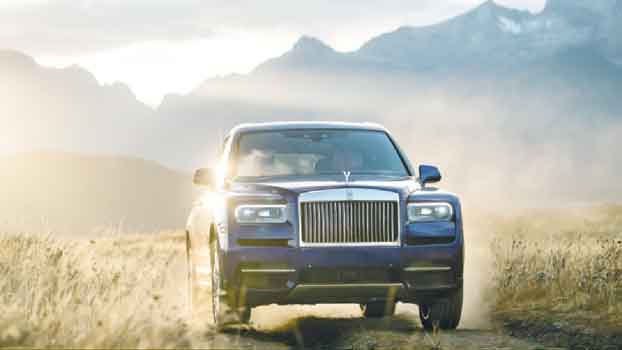All hail the mighty SUV

These high riders are presented as ideal all-in-one vehicles to meet most needs, vehicles that can take you off-road, while at the same time retaining decent on-road manners. Oh, and they have quite spacious interiors and they are perceived as being safer vehicles than the traditional hatchbacks, sedans or wagons.
Furthermore, such vehicles are also seen as status symbols - people not only like to be seen in SUVs, thinking that it makes others envy their success, but they also like looking down on other motorists. And I’m not making this up - ask most SUV or crossover owners and the fact that they look down at other drivers is one of the things they appreciate about this type of vehicle.
It’s all madness, if you ask me, and it’s interesting to analyze how we got here, especially over the last decade when SUVs have really taken off. They’ve been growing in popularity since the late 1990s, but in the last ten years they have become the dominant type of vehicle, forcing manufacturers you’d never have associated with SUVs to start making and selling them in order to stay afloat - heck, even Ferrari has confirmed it’s making one.
SUVs were always more popular in the United States, where even back in 2011, they accounted for 30 percent of all new car sales. In the same year, only 12 percent of European car buyers chose an SUV. In 2018, though, the SUV’s market share had risen to 48 percent, while in Europe it’s up to 39 percent.
And this is the global trend, it seems, applicable to most major markets. In India, for instance, around 11 percent of car buyers picked an SUV in 2010, and this rose to 30 percent in 2018. The same thing goes for China - in 2010 just 14 percent of new vehicles bought were SUVs, rising to 42 percent in 2018.
The SUV onslaught seems unstoppable and doesn’t show signs of waning in the near future. In fact, it’s only picking up more momentum and adding more and more followers. This is definitely a sign that the conventional, traditional car market is changing, especially if we look at both the rise of the SUV and the increasing proliferation of electric and electrified vehicles.
Manufacturers are more than happy to sell you an SUV too. Most of the time, these higher-riding vehicles share their basic platform with a sedan or hatchback and this helps the automakers keep costs down. And since SUVs carry a price premium over traditional bread and butter body styles, the profit margin on these vehicles is better - even if many consider it a bad trend, manufacturers are making a lot of money off SUVs.
Why is it a bad trend? Well, making vehicles taller, heavier and less aerodynamic directly affects their efficiency - how much (or how little) fuel a vehicle uses is a hot topic these days, and even though manufacturers are making SUVs more and more efficient (some even remarkably so), the fact of the matter is they will never be as efficient as lower, lighter and more aerodynamic cars.
They also pose more of a risk on the road due to their higher inertias and centers of gravity. An SUV is more prone to understeering, toppling over and they don’t handle, steer or brake anywhere near as well as a hatch, sedan or wagon. So even if you might be safer in an SUV in an accident, you are also more likely to cause one, especially if you drive an SUV as you do a regular car.
Most SUV drivers also almost exclusively drive their SUV in the city where they are also much more likely to hurt pedestrians if, say, something happens to them while at the wheel and they mount a sidewalk. Although, to be fair, most modern SUVs aren’t actually that good off-road, so driving them in the city and on the highway is really the only thing they are good at.
All of the above taken into consideration, the relentlessness with which the SUV is taking over the market is remarkable (and a bit scary for some more traditionally-minded car buyers) and it doesn’t show signs of slowing down any time soon. Quite the contrary, actually, as SUV sales continue to rise marking a trend that will be seen as defining for the decade that is now rolling to a close.



